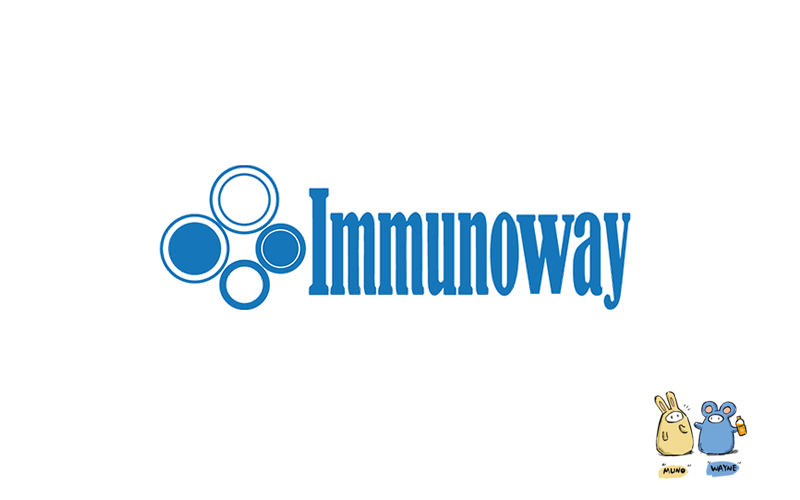
主要信息
Target
CD2AP
Host Species
Rabbit
Reactivity
Human, Mouse
Applications
WB, ELISA
MW
70kD (Observed)
Conjugate/Modification
Unmodified

货号: YN1569
规格
价格
货期
数量
200μL
¥3,780.00
现货
0
100μL
¥2,300.00
现货
0
40μL
¥960.00
现货
0
加入购物车


已收藏


收藏
详细信息
推荐稀释比
WB 1:500-2000; ELISA 1:5000-20000
组成
Liquid in PBS containing 50% glycerol, 0.5% BSA and 0.02% sodium azide.
特异性
CD2AP Polyclonal Antibody detects endogenous levels of protein.
纯化工艺
The antibody was affinity-purified from rabbit antiserum by affinity-chromatography using epitope-specific immunogen.
储存
-15°C to -25°C/1 year(Do not lower than -25°C)
浓度
1 mg/ml
实测条带
70kD
修饰
Unmodified
克隆性
Polyclonal
同种型
IgG
相关产品
抗原&靶点信息
免疫原:
Synthesized peptide derived from human protein . at AA range: 320-400
展开内容
特异性:
CD2AP Polyclonal Antibody detects endogenous levels of protein.
展开内容
基因名称:
CD2AP
展开内容
蛋白名称:
CD2-associated protein (Adapter protein CMS) (Cas ligand with multiple SH3 domains)
展开内容
背景:
This gene encodes a scaffolding molecule that regulates the actin cytoskeleton. The protein directly interacts with filamentous actin and a variety of cell membrane proteins through multiple actin binding sites, SH3 domains, and a proline-rich region containing binding sites for SH3 domains. The cytoplasmic protein localizes to membrane ruffles, lipid rafts, and the leading edges of cells. It is implicated in dynamic actin remodeling and membrane trafficking that occurs during receptor endocytosis and cytokinesis. Haploinsufficiency of this gene is implicated in susceptibility to glomerular disease. [provided by RefSeq, Jul 2008],
展开内容
功能:
Disease:Defects in CD2AP are the cause of susceptibility to focal segmental glomerulosclerosis 3 (FSGS3) [MIM:607832]. FSGS3 is a common renal lesion characterized by increased urinary protein excretion and decreasing kidney function. Renal insufficiency often progresses to end-stage renal failure, a highly morbid state requiring either dialysis therapy or kidney transplantation. FSGS is defined by the presence of segmental sclerosis in glomeruli, and is seen in all ethnic groups, although it is particularly common in individuals of African descent. FSGS occurs as an isolated primary condition or secondary to disorders as HIV infection, obesity, hypertension and diabetes. FSGS may also be inherited as a mendelian trait.,Domain:Potential homodimerization is mediated by the coiled coil domain.,Domain:The Pro-rich domain may mediate binding to SH3 domains.,Function:Seems to act as an adapter protein between membrane proteins and the actin cytoskeleton. May play a role in receptor clustering and cytoskeletal polarity in the junction between T-cell and antigen-presenting cell. May anchor the podocyte slit diaphragm to the actin cytoskeleton in renal glomerolus. Also required for cytokinesis.,PTM:Phosphorylated on tyrosine residues; probably by c-Abl, Fyn and c-Src.,similarity:Contains 3 SH3 domains.,subcellular location:Colocalizes with F-actin and BCAR1/p130Cas in membrane ruffles. Located at podocyte slit diaphragm between podocyte foot processes (By similarity). During late anaphase and telophase, concentrates in the vicinity of the midzone microtubules and in the midbody in late telophase.,subunit:Self-associates. Homodimer (Potential). Interacts (via SH3 2 domain) with CBL (via phosphorylated C-terminus). Interacts with BCAR1/p130Cas (via SH3 domain). Interacts with F-actin, PKD2, NPHS1 and NPHS2. Interacts with WTIP (By similarity). Interacts with FAM125A and ARHGAP17. Interacts with ANLN, CD2 and CBLB. Interacts with PDCD6IP and TSG101. Interacts with DDN; interaction is direct.,tissue specificity:Widely expressed in fetal and adult tissues.,
展开内容
细胞定位:
Cytoplasm, cytoskeleton . Cell projection, ruffle . Cell junction . Colocalizes with F-actin and BCAR1/p130Cas in membrane ruffles (PubMed:10339567). Located at podocyte slit diaphragm between podocyte foot processes (By similarity). During late anaphase and telophase, concentrates in the vicinity of the midzone microtubules and in the midbody in late telophase (PubMed:15800069). .
展开内容
组织表达:
Widely expressed in fetal and adult tissues.
展开内容
研究领域:
>>Bacterial invasion of epithelial cells
展开内容
文献引用({{totalcount}})
货号: YN1569
规格
价格
货期
数量
200μL
¥3,780.00
现货
0
100μL
¥2,300.00
现货
0
40μL
¥960.00
现货
0
加入购物车


已收藏


收藏
Recently Viewed Products
Clear allToggle night Mode
{{pinfoXq.title || ''}}
Catalog: {{pinfoXq.catalog || ''}}
Filter:
All
{{item.name}}
{{pinfo.title}}
-{{pinfo.catalog}}
主要信息
Target
{{pinfo.target}}
Reactivity
{{pinfo.react}}
Applications
{{pinfo.applicat}}
Conjugate/Modification
{{pinfo.coupling}}/{{pinfo.modific}}
MW (kDa)
{{pinfo.mwcalc}}
Host Species
{{pinfo.hostspec}}
Isotype
{{pinfo.isotype}}
产品 {{index}}/{{pcount}}
上一个产品
下一个产品
{{pvTitle}}
滚轮缩放图片
{{pvDescr}}




















